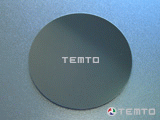|

Neutral density filters are light filters that decrease the intensity of light without altering the relative spectral distribution of the energy. They are used to filter the entire visible spectrum evenly, allowing light reduction, without influencing color or contrast. For this reason, neutral density filters are often referred to as gray filters, or ND filters. Attenuation is accomplished by using either a light-absorbing glass or a thin-film metal coating that combines absorption and reflection. Metallic type neutral density filters obtain their optical density by depositing a metal alloy coating onto a specific type of substrate, which is determined by the wavelength region of interest. They are slightly sensitive to angles but they are much more forgiving than interference filters. Neutral density (ND) filters attenuate spectral regions selected from 250 to 2500 nm. The level of attenuation can be specified from optical density 0.04 to 5.0.
Principle: Optical Density: OD, Transmittance: T, so OD=Log(1/T).
|



